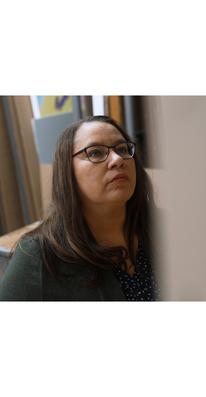Research to Connect Communities
The Tweed’s exhibition “ A Life Well-Painted: The Art of Carl Gawboy” connects the history of our region with today, and connects the museum to the community.
Carl Gawboy is a Bois Forte Anishinaabe and Finnish artist who depicts the everyday activities he’d seen growing up in Northern Minnesota.
For the exhibition, Karissa White Isaacs, curator at the Tweed Museum of Art, chose more than 50 pieces that spanned more than 50 years, beginning with work Gawboy created as a UMD student in the early 1960s.
Carl Gawboy paints a broad range of Native experiences that are out of the realm of what most artists paint. Gawboy’s preferred medium is watercolor.
“I wanted to be a curator and present change with my knowledge. I take it seriously– how I present things to the public, how Native people are depicted, how all people are depicted.”
- Karissa White Isaacs, curator at the Tweed Museum of Art
A note from the editor: Dr. Karissa White Isaacs passed away after a brief illness as we were preparing to publish her story. White Isaacs’ work with Carl Gawboy is an example of her extraordinary ability to connect with artists and amplify their collections for the communities too often overlooked in museology.
Research for healthier lakes.
K eeping invasive spiny water fleas out of Minnesota’s lakes and rivers means that walleyes and other fish continue to thrive, and that’s good for Minnesota’s tourism and restaurant industries. Learn more about our research on spiny water fleas .
Research for cleaner water.
Minnesota lakes and ecosystems need to be protected for future generations. People need clean water and a clean environment to thrive. When microplastics get into the environment there is concern they will damage the ecosystem and human health. Learn more about our research on microplastics .
Research for amplified care.
Augmenting the care humans provide allows people with dementia to stay independent longer. This takes research for smarter robotics. Learn more about how Pepper the robot is helping senior citizens maintain quality of living and delay assisted living care.
